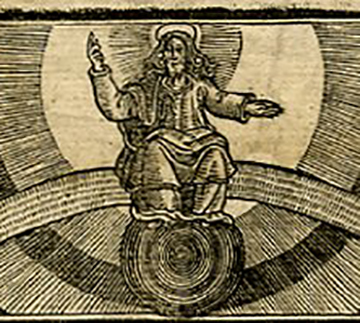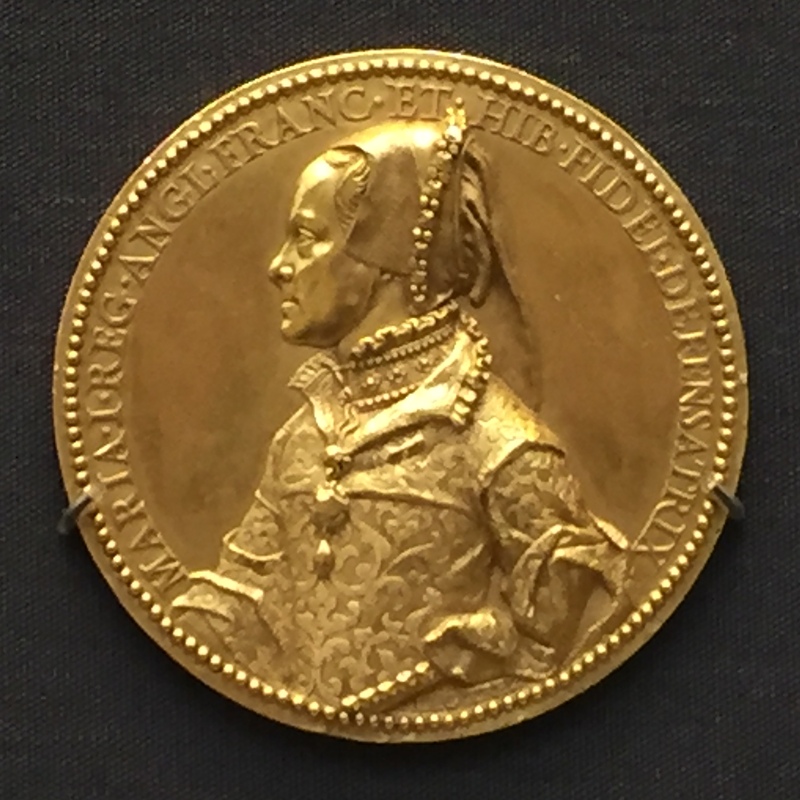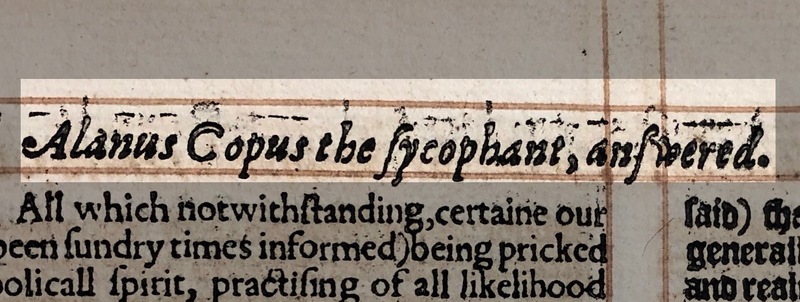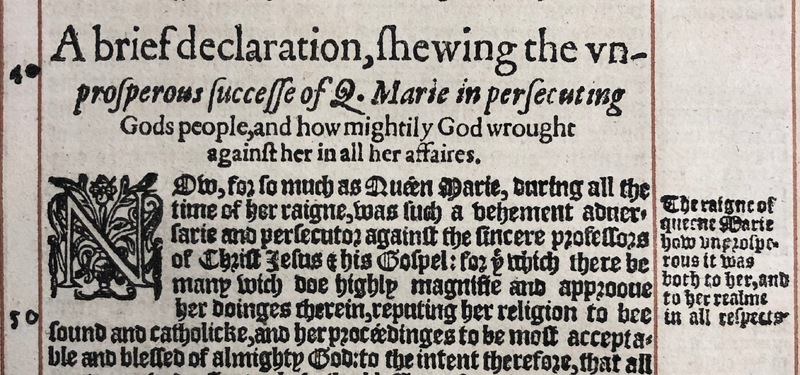Queen Mary's "Bloody" Image
Mary the Martyr’s “Villain”
Part of the establishment of the “villainous” Catholic female characters in Acts & Monuments, can be tied directly back to Foxe’s portrayal of Queen Mary—a central "villain" in the book of martyrs.
The story of Mary’s false pregnancy is a peculiar addition to the book of martyrs—especially as it follows the martyrdom of Thomas Wattes (Foxe 1450). Yet, upon closer examination, a pattern emerges among the stories of these “villainous” female figures, one that marks a continuation of internal textual debates between the Protestants and Catholics.
In the Margaret Jourdeman retraction, Foxe defends himself against the accusations laid by Nicholas Harpsfield (i.e. Alanus Copus) that he described Margaret as a martyr: “Margaret Jourdeman I never spake of, never thought of, never dreamed of” (Foxe 645). Yet once again Nicholas Harpsfield returns in Acts & Monuments, not as Foxe's spited literary critic, but this time as the deputy in the sentencing of Thomas Wattes. The placement of such a well-known critic of Protestantism as a central figure in martyrdom of Thomas Wattes—whether historically accurate or not—invokes subtle reference to the heated discussion that took place between the two men within their respective books (Pictured below).
The close proximity of the story of Thomas Watte’s martyrdom and Mary’s false pregnancy, parallels the contrasting placement of the Garnsey women’s story and that of Pope Joan’s pregnancy (see: “Pope Joan” page). In the previous depiction, the placement of the Garnsey martyrdom is meant to further vilify Pope Joan as participating in involuntary infanticide as a result of her deception as the Pope: “to the destruction of her child, when the needed not” (Foxe 1767). The death of Pope Joan’s child serves to further the consistent portrayal of “villainous” women as metaphors for the “villainous” Catholic Church in Acts & Monuments. Yet, just as in the previous depictions of these female figures, so too does Mary’s pregnancy becomes an example of a “false mother” and a metaphor for the Protestant’s view of Catholic authority. Once again a female figure becomes the centre religious debates with the goal of usurping Catholic validity in post-Reformation England.
Queen Mary I is described as deceptive (like Pope Joan) as a result of attributed “false” pregnancy:
“Heere is a [j]oyfull triumph, but at length all will not prove worth a messe of potage, as indeed it came to passe: For in the end all proved cleane contrarie, and the [j]oy and expectations of men were much deceived. For the people were certified, that the Queene neither was as then delivered, nor after was in hope of have any child” (Pictured left: Fox 1450)
The Unprosperous Queen
Queen Mary’s pregnancy story ends abruptly once Foxe’s point is made, but several chapters later she returns again under the “Unprosperous Queen” moniker:
“A briefe declaration, shewing the [u]nprosperous successe of [Queen] Mary in persecuting Gods people, and how mightily God wrought against her in all her affaires. Now, for so much as Queen Mary, during all the time of her [reign], was such a vehement adversarie and persecutor against the sincere professors of Christ [J]esus and his Gospel” (Pictured below: Fox 1901).
Queen Mary is a pinnacle figure in Foxe’s Acts and Monuments, but her role in the text is built up by the re-occurring parallels and themes explored through similar “villainous” female characters. This representation builds upon the type of religious dissonance that the text seeks to invoke in post-Reformation readers. Mary, therefore, becomes an example in the debate of religious dominance through the use of language meant to destabilize the validity of her rule and, by extension, the Catholic Church she is associated with: “unprosperous queen” and a “persecutor against the sincere professors” (Foxe 1901). Non-protestant female characters are a staple in Acts & Monuments, but unlike the virtuous examples of the female martyrs, they are used to further the type of longstanding religious debates that tore England in half.
Works Cited
Foxe, John, 1516-1587. Actes and Monuments of Matters most Speciall and Memorable Happening in the Church: With an Universall Historie of the Same. Printed for the Company of Stationers, London, 1610.
Hispalois. 1555 Gold Medal Queen Mary I of England. https://commons.wikimedia.org/wiki/File:1555_gold_medal_Queen_Mary_I_of_England.jpg. Accessed December 5th, 2018.




